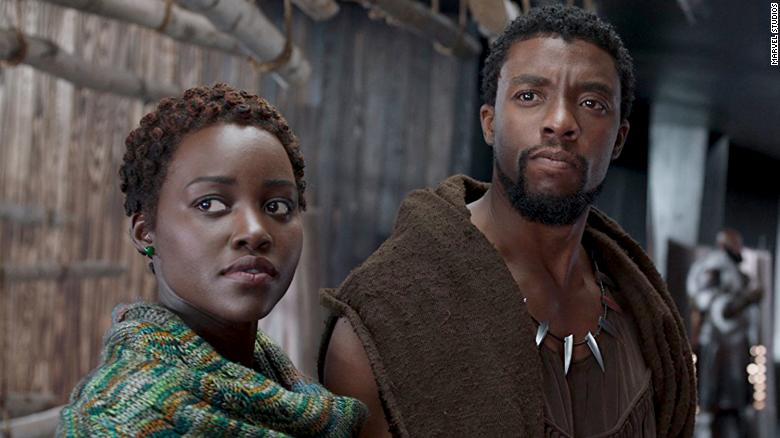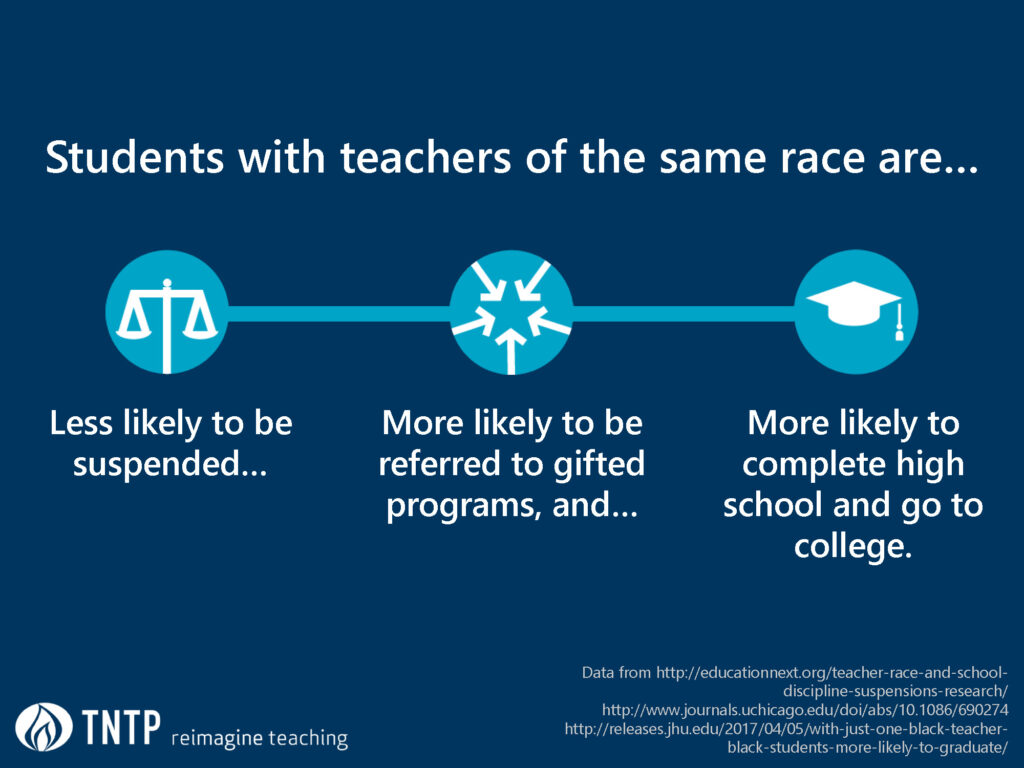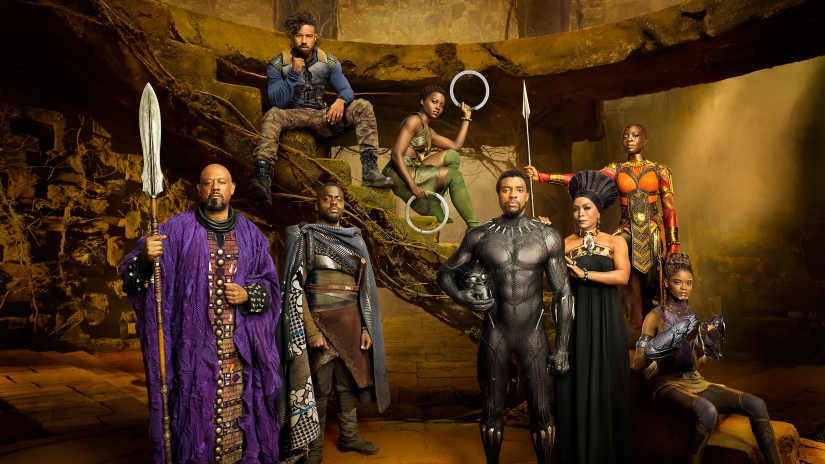This op-ed was originally published in Education Post.
I am looking forward to the premiere of “Black Panther” with the same excitement I bring to planning my birthday month. (Yes, I said month.) I already have my three opening day outfits laid out—my pre-movie outfit, my beginning of the movie outfit, and the outfit that I’m changing into during my made-up intermission. Along with thousands of others, I’ve also changed my Twitter name to Kenya Bradshaw of Wakanda.
The Black community is embracing “Black Panther” as a true gift, a clear historical marker of joy, love and freedom. At least that is how me and my tribe are seeing the movie, and why our support has helped set a new record for box-office pre-sales. The only thing that would be better would be to actually have been a cast member, but by the end of the month we all will be from Wakanda anyway, so we are good.

Communities have organized over 200 grassroots fundraising campaigns to make the movie more accessible, particularly for children.
According to “Variety,” communities have organized over 200 grassroots fundraising campaigns to make the movie more accessible, particularly for children. In my home city of Memphis, John Best of Shelby County Schools, bought out all 1,980 seats at the Malco Paradiso theater so that all students would have a chance to experience a world of brilliant, powerful Black men and women who look and sound like them and provide them with a visual model for who they can be in the future.
WE NEED ROLE MODELS OFF-SCREEN, TOO
Black children don’t just need these models on the big screen—they also need them in the classroom. In my role as a vice president for TNTP, a national non-profit organization devoted to educational equity, I frequently meet African-American people who have never been taught by a teacher of color.
[subscribe]
While half of all students in public schools are students of color, 80 percent of public school teachers and principals are White. I have no doubt that many of these teachers and principals are doing great things for the children in their schools—but I also know firsthand that there are extraordinary benefits that come from having a teacher who looks and sounds like you.
Research shows that while all children benefit from being in diverse classrooms, children of color especially reap the benefits. According to a recent study, Black boys who have a single Black teacher in their elementary school years are 39 percent less likely to drop out of high school. Other studies show that students of color who have teachers of color are more likely to be enrolled in gifted programs, less likely to be suspended or drop out, and more likely to achieve at higher levels.

While all children benefit from being in diverse classrooms, children of color especially reap the benefits.
In a recent interview that Ed Trust conducted with Nate Bowling, a former Teacher of the Year from Washington State, he explains that Black teachers are good for Black children in part because they know from experience what Black brilliance looks like and sounds like. Black teachers are more likely to recognize and celebrate the assets that Black children bring to the classroom, and studies show that they are less likely to bring stereotypes and biases into the classroom.
When you are trying to come into your own as a person, being exposed to models of excellence that look like you helps you find your own path and see new possibilities for your future. When children are spending between 900 and 1300 hours a year in the classroom, it’s critical that they are seeing people in the school building who look like them.
SO WHAT DO WE DO?
We didn’t always have such a shortage of Black teachers. One of the legacies of America’s sordid history of race relations is that the movement toward school integration had the unintentional effect of pushing Black teachers out of the teaching profession. In a recent article in Ebony, Melinda Anderson describes how Black teachers were the collateral damage of the movement toward school integration.
Before schools were integrated, there were 82,000 Black teachers in the south. In the eleven years following the Brown decision, more than 38,000 Black teachers and administrators were out of a job when Black schools were closed and newly integrated schools refused to hire them. From that point forward, Black children were far less likely to be taught by teachers who looked like them. (For more information on this, check out Malcolm Gladwell’s interview on Brown v. Board.)
Simply put, our nation has failed to prioritize the development of a truly diverse teacher workforce. Instead, we make excuses. But there are things we can all do to help every child have access to more teachers who look like them.
Ask questions. As you make decisions about where to send your children, pay attention to the diversity of a school’s teacher workforce. What is your local school district doing to increase the diversity of its teacher workforce to make sure that it’s roughly proportionate to the student population? How is the district helping great teachers of color thrive once they arrive in the classroom? Are students regularly encountering stories of Black and Brown excellence in their curricular materials? At schools where the teaching population doesn’t reflect the demographics of the school, do teachers have access to training to help them confront the implicit biases that all of us have, and support in learning how to better connect with students and families that may not look like them?
[related]
Build stronger pipelines. Many forward-looking school districts are taking innovative steps to build their own diverse pipelines of new teachers. Last year, we helped one of our partner districts recruit over 70 percent of people of color for their in-house teacher certification program. While these efforts are a great start, it’s also important to support teachers of color once they arrive in the classroom, pay all great teachers well, and make sure they have pathways to grow professionally.
Advocate to reduce barriers for entry to the teaching profession. Far too many states have set up meaningless barriers that lock talented aspiring teachers and school leaders out of schools. One of the best solutions that we have for increasing the diversity of the teacher workforce is by shoring up high-quality alternative certification programs. Research shows that these teachers are just as effective as teachers who graduate from traditional education programs. Approximately one-third of alternate route teachers are teachers of color, compared to just over 10 percent of the overall teacher population.

We need to bring the boldness and passion of T’Challa to efforts to create more of the inclusive classrooms that we know will help our children excel.
When we stop making excuses for a lack of diversity in our children’s classrooms, we will act differently. We will be more intentional about making sure that all of our students have access to role models who look like them. We will build stronger pipelines in our colleges and universities for students of color, and we will be intentional about hiring teachers of color and setting them up for success.
Like the powerful, indestructible element vibranium—our children are our most precious resource. We need to bring the boldness and passion of T’Challa to efforts to create more of the inclusive classrooms that we know will help them excel.





